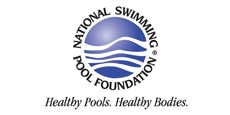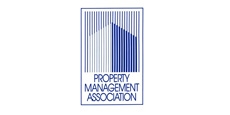The Nine Switches of Human Alertness

Right now, take a moment and estimate how alert you are on a scale of 1 to 10. Now, go a step further and try to pinpoint what factors are influencing your alertness levels.
In his book, The Twenty-Four Hour Society, Dr. Martin Moore-Ede identifies how a person’s alertness is triggered by nine key internal and external factors that can be considered the switches on the control panel of the mind.
Understanding these 9 key switches and how to manipulate them is the secret of gaining power over one of the most important attributes of the human brain: alertness.
Here are 9 switches – recognizing them can help you stay alert on the job.
1. Sense of danger, interest or opportunity
Nothing pulls us faster from a drowsy state than the imminent threat of danger, or just surviving a near miss. The emergency fight-or-flight response is activated by the sympathetic nervous system, and the brain is placed on full alert. However, it is important to note that the presence of danger is not enough; the danger must be perceived and feared.
Although less extreme than the response to danger, a stimulating task or opportunity triggers a similar response. The flip-side is that alertness fades if what you’re doing is monotonous. An endless stretch of freeway or a quiet night in a plant where everything is running smoothly can prompt drowsiness.
2. Muscular Activity
Physical activities such as walking or stretching also trigger the sympathetic nervous system and help keep you alert. However, many jobs require us to be sedentary. Extended periods without much movement, such as sitting in a chair or car, can make it difficult to stay fully alert or even awake.
3. Time of day on the circadian clock
Circadian rhythms – daily ups and downs in body temperature, blood pressure, hormone levels and other physiological traits – have a major effect on alertness. We generally experience peak levels of alertness in the morning and early evening and lowest levels of alertness in the early afternoon and during the overnight hours.
4. Sleep bank balance
How long you’ve been awake and how much sleep you’ve had in recent days affects your alertness level. If you only sleep four or five hours a day for several days, you build up a “sleep debt” that leads to reduced alertness. A long spell of sleep acts as a “deposit” that offsets your sleep debt.
5. Ingested nutrients and chemicals
Caffeine and amphetamines temporarily increase alertness. Others, such as sleeping pills, antihistamines, melatonin and certain foods, may induce sleep. Of course, some of these substances have serious drawbacks because of their negative effect on overall health and potential for abuse or addiction.
6. Environmental light
Bright light tends to increase alertness, particularly during the over-night hours. Whether you’re at home or on the job, dim light or darkness set the stage for falling asleep.
7. Temperature and humidity
Cool, dry air, especially on your face, makes it easier to stay alert, while heat and humidity make you drowsy. Similarly, a cold shower is invigorating, while a warm bath prepares you for sleep.
8. Sound
As you know, sound can be both a tool for promoting sleep and increasing alertness. Be conscious of the sound around you and adjust it to fit what you need. For example, the soft hum of computers in the middle of the night might lull you into sleep.
9. Aroma
Some researchers believe that aromas like peppermint, pine and citrus can make people more alert. Lavender, meanwhile, seems to have a sedative effect.
At first glance the Nine Switches of Alertness may seem obvious and straightforward. However, many workplaces have not embraced the 'switches' to increase the alertness of their workforce.
One challenge is that the human desire for comfort intervenes. Making oneself comfortable is not compatible with optimal alertness, especially during the wee hours of the morning. In fact, the desire for comfort may be so dominant, and lack of awareness of the compromise one is making with alertness so large, that alertness takes a back seat.
Take for example, high-tech industrial control rooms that are being built around the world. Many of them are more focused on human comfort than on alertness because of the belief that comfort equals improved performance. However, the truth is that sometime to be fully alert one must be a little uncomfortable.
Want to learn more about alertness and human fatigue? Visit CIRCADIAN.com to download a free white paper about human fatigue.
Source: Martin Moore-Ede, The Twenty-Four Hour Society: Understanding Human Limits in a World That Never Stops, Addison-Wesley 1993.
About CIRCADIAN
CIRCADIAN® is the global leader in providing 24/7 workforce performance and safety solutions for businesses that operate around the clock. Through a unique combination of consulting expertise, research and technology, software tools and informative publications, CIRCADIAN helps organizations with traditional and/or extended operating hours optimize employee performance and reduce the inherent risks and costs of sleep deprivation and fatigue.








